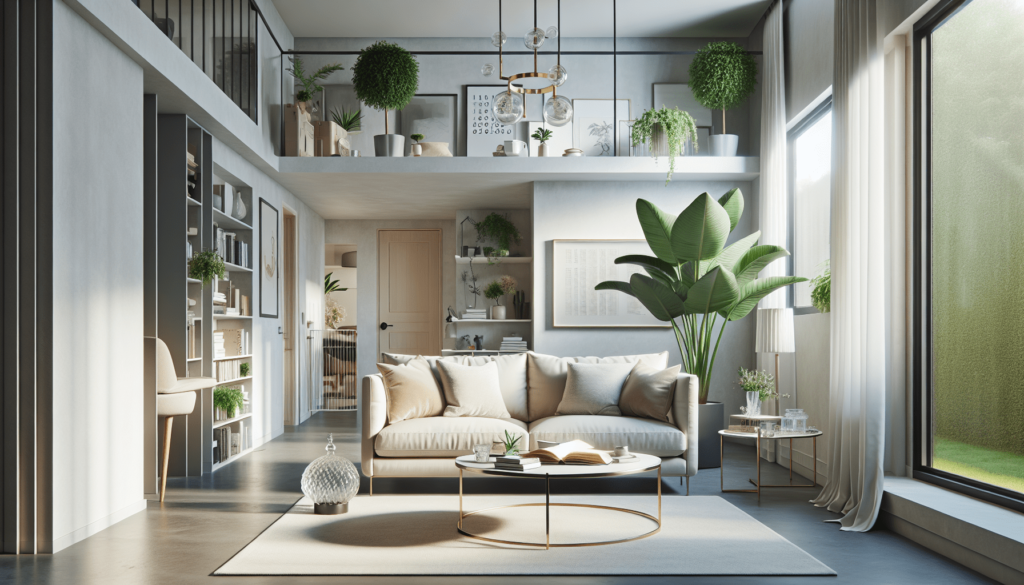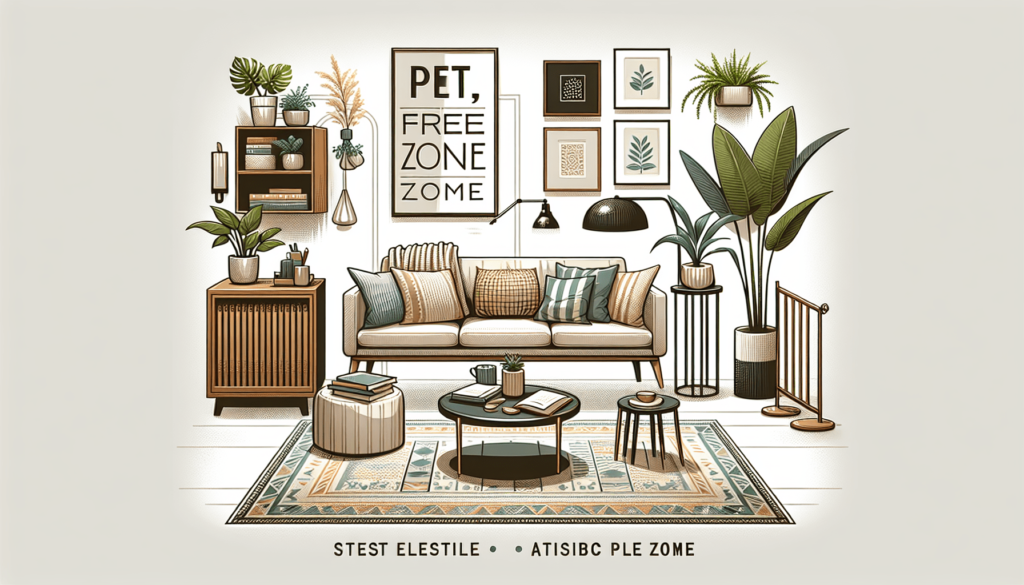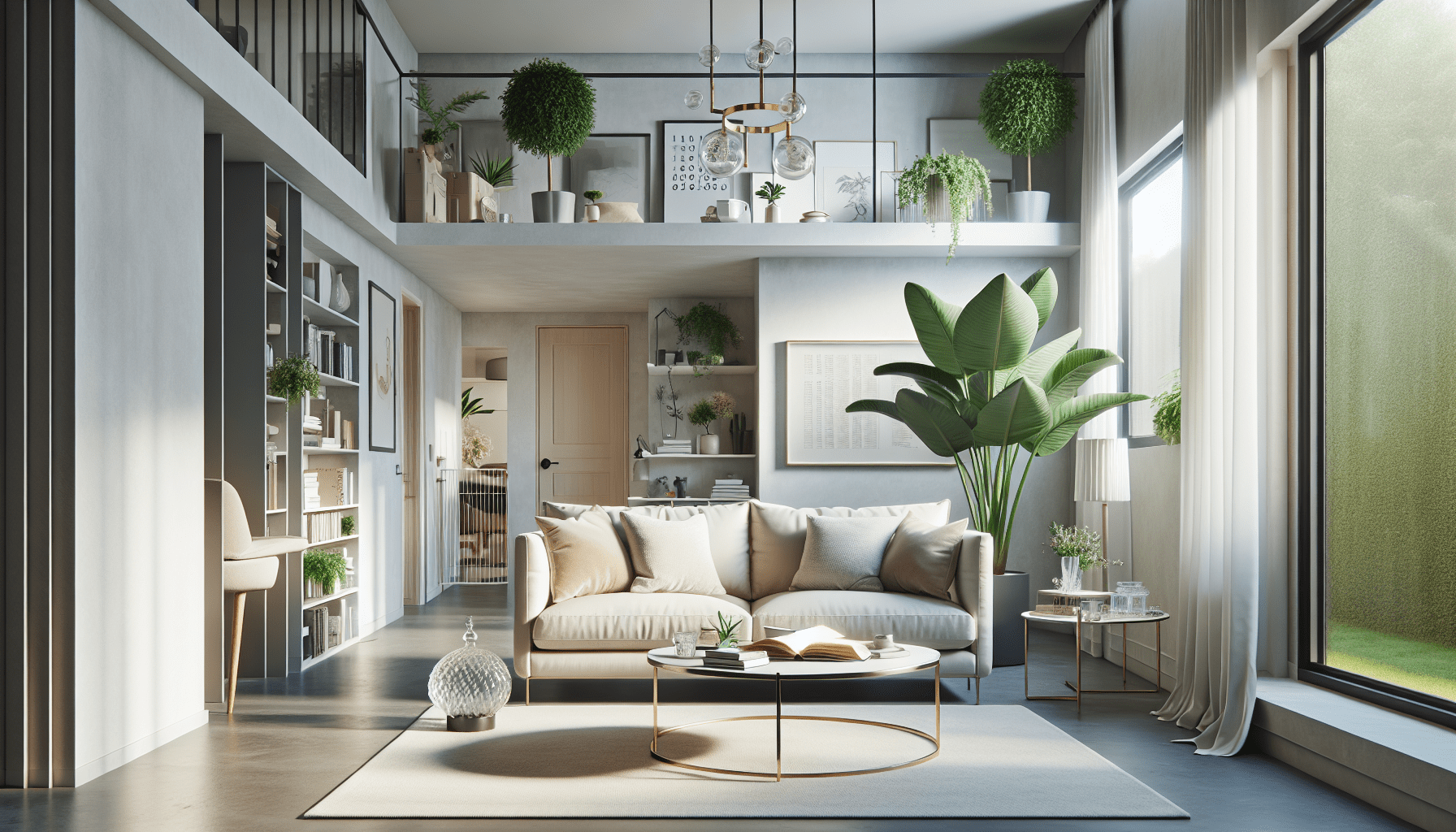Creating a designated pet-free zone in your home can be a fantastic way to carve out a space that’s entirely your own. Whether you’re looking to protect your belongings or simply want a quiet sanctuary, this article will guide you through five straightforward steps to achieve that pet-free haven. From selecting the ideal location to implementing effective barriers, you’ll learn the best practices for ensuring that your furry friends respect this special area. Dive in and discover how to harmoniously balance your love for pets with your need for personal space. Have you ever wondered how to carve out a pet-free zone in your home without making your furry friends feel excluded? Creating a space that’s just for humans can seem challenging, but with a few strategic steps, you can set up a pet-free zone that works for everyone involved. Whether you need a cat-free kitchen or a dog-free dining room, here are five steps to help you create a pet-free area in your home.

Step 1: Identify the Area That Needs to Be Pet-Free
First and foremost, decide which part of your home you want to keep off-limits to your pets. This could be your bedroom, a guest room, the kitchen, or even a home office. Identifying the specific area will make it easier to put the next steps into action.
Why Identify the Space?
Knowing the exact area you want to keep pet-free gives you a clear starting point. It helps you tailor your efforts and ensures you’re not overcomplicating things by trying to keep pets out of multiple areas simultaneously.
Factors to Consider
When identifying the area, consider the following:
- Purpose of the Room: Will this be a space for relaxation, work, or a place to keep fragile items?
- Ease of Access Control: Can the area be easily closed off with a door or a gate?
- Pet Behavior: Is your pet naturally drawn to this area? Will they be particularly distressed if they’re suddenly restricted from it?
Purpose and Use
For example, if you’re working from home and need an office free from distractions, that’s a great place to start. On the other hand, if your kitchen has become a battleground for food scraps and curious pets, this might be your priority zone.
| Area | Purpose | Access Control | Pet Behavior |
|---|---|---|---|
| Bedroom | Relaxation/Sleep | Door | Moderate |
| Kitchen | Cooking/Eating | Gate/Door | High |
| Home Office | Work | Door | Low |
| Guest Room | Visitor Space | Door | Low |
| Dining Room | Eating/Entertaining | Gate/Door | High |
Step 2: Set Up Physical Barriers
Once you’ve identified the area, the next step is to set up physical barriers. These barriers serve to designate the space as off-limits, making it easier for your pets to understand where they’re not allowed.
Types of Physical Barriers
There are various types of barriers you can use, depending on the area and your pet:
Doors
The easiest way to create a pet-free zone is simply to close the door. However, this might not always be feasible or aesthetically pleasing.
Baby Gates
Baby gates are a versatile option and work well for dogs. They come in various designs and heights, making them suitable for different room openings.
Pet Barriers
There are specialized pet barriers designed to be more robust than baby gates, often used for larger dogs or more agile pets.
Barrier Placement
Strategic placement of barriers is crucial. Consider where your pet usually enters the room and place the barrier there. Additionally, make sure the barrier is tall enough if you have a particularly adventurous pet.
Example Placement
For example, if you have a curious dog that loves to sneak into the kitchen, a baby gate at the entrance can do wonders. If your cat enjoys sneaking into your office, an actual door might be more effective, since cats have an easier time jumping over shorter barriers.
| Barrier Type | Best For | Placement Idea | Pros | Cons |
|---|---|---|---|---|
| Door | All Pets | Entrances | Easy, cost-effective | Blocks human pathways |
| Baby Gate | Dogs | Doorways, staircases | Versatile, easy to install | Some designs can be flimsy |
| Pet Barrier | Larger Dogs | Wide openings, yard entrances | Sturdy, pet-specific | Generally more expensive |
Step 3: Make the Area Attentive to Human Needs
Now that you’ve physically restricted your pets, it’s time to make sure the pet-free zone feels inviting and comfortable for humans. After all, this is a space where you’ll spend quality time without interruptions.
Furniture and Layout
Furnish the space in a way that emphasizes its intended use. If it’s a home office, invest in an ergonomic chair and sturdy desk. If it’s a guest room, make sure the bed is comfortable and there are enough storage options for visitor belongings.
Décor and Amenities
Ensure the area is well-decorated to feel cozy and inviting. This might include adding throw pillows, artwork, or a reading lamp if it’s a relaxation space.
Example Decoration Plan
For instance, if your pet-free zone is a reading nook, set up a comfortable chair, a small bookshelf, and good lighting. Adding a few cozy blankets can make the space feel even more inviting.
Cleaning and Maintenance
Another important aspect is keeping this area clean. Without pets, you won’t have to worry about pet hair or dander, but regular dusting and vacuuming will keep it pristine.
| Area | Human Needs Focus | Example Items | Cleaning Tips |
|---|---|---|---|
| Home Office | Workspace Setup | Ergonomic Chair, Desk, Shelves | Regular dusting, cable management |
| Bedroom | Relaxation/Sleep Comfort | Comfy Bed, Reading Lamp, Pillows | Change sheets regularly |
| Guest Room | Visitor Comfort | Comfortable Bed, Storage Options | Clean before guest arrival |
| Reading Nook | Relaxed Atmosphere | Chair, Bookshelf, Throw Blanket | Vacuum regularly |
| Dining Room | Eating/Entertaining Space | Dining Table, Chairs, Centerpieces | Wipe table after use |
Step 4: Train Your Pet
Training your pet to stay out of the newly designated pet-free zone is critical to maintaining the integrity of the space. It might take some time and patience, but with consistent training, your pet will learn to respect the boundaries.
Basic Commands and Reinforcement
Utilize basic commands such as “stay” and “leave it” to enforce the new rules. Use positive reinforcement, like treats and praise, when your pet obeys.
Create Clear Boundaries
Make it clear to your pet where the no-entry zone begins. You can use a pet gate initially, and over time, your pet will recognize and respect the invisible boundary.
Training Steps Example
For example, if you’ve designated your home office as a pet-free zone, start by placing treats just outside the boundary and commanding your pet to “stay.” Gradually move further away, reinforcing their obedience with treats and praise.
Dealing with Stubborn Pets
Some pets are more stubborn than others. In such cases, persistence is key. If necessary, consider seeking help from a professional trainer.
| Training Activity | Description | Benefits | Tips |
|---|---|---|---|
| Basic Commands | Teaching “stay” and “leave it” | Establishes immediate control | Use consistent commands |
| Positive Reinforcement | Rewarding good behavior | Encourages compliance | Treats, praise, and playtime |
| Clear Boundaries | Defining no-entry zones | Makes boundaries visible | Use gates/barriers initially |
| Professional Help | Hiring a certified trainer | Addresses complex behaviors | Research reputable trainers |

Step 5: Monitor and Adjust
Even after setting up physical barriers and training your pet, the journey doesn’t end. Monitoring the effectiveness of your pet-free zone is crucial to making necessary adjustments and ensuring lasting success.
Regular Check-Ins
Periodically check the pet-free zone to ensure it’s serving its intended purpose. Has your pet found a new way to sneak in? Is the area still comfortable and functional for you?
Adjustments Based on Observations
Make adjustments based on what you observe during your regular check-ins. This might include reinforcing barriers, re-training your pet, or even changing the layout or use of the space.
Monitoring Plan Example
For example, if you notice your dog has learned to jump over the baby gate, you may need to invest in a taller gate or reposition it. If the space feels cluttered, consider reorganizing furniture to maximize comfort.
Feedback Loop
Don’t hesitate to seek feedback from family members or roommates who share the space. Their insights can provide valuable perspectives on what’s working and what needs improvement.
| Monitoring Activity | Description | Action Plan | Adjustment Tips |
|---|---|---|---|
| Regular Check-Ins | Periodically assess zone effectiveness | Identify any breaches or discomfort | Pay attention to pet behavior |
| Barrier Reinforcement | Strengthen physical barriers | Address any weaknesses or breaches | Consider sturdier options |
| Space Reorganization | Reevaluate space layout and use | Optimize for comfort and functionality | Declutter, rearrange furniture |
| Feedback Gathering | Gather insights from others | Incorporate valuable feedback | Communicate openly |
Conclusion
Creating a pet-free zone in your home can elevate your living experience by providing a designated area for relaxation, focus, or hosting guests without interruptions from your furry companions. By identifying the area, setting up physical barriers, making the space human-friendly, training your pet, and monitoring and adjusting as needed, you can successfully create a harmonious environment for both you and your pets. Remember, the key to a successful pet-free zone is consistency and patience. With time, you’ll find that both you and your pet can adapt to this new arrangement, making your home a happier place for everyone involved.
